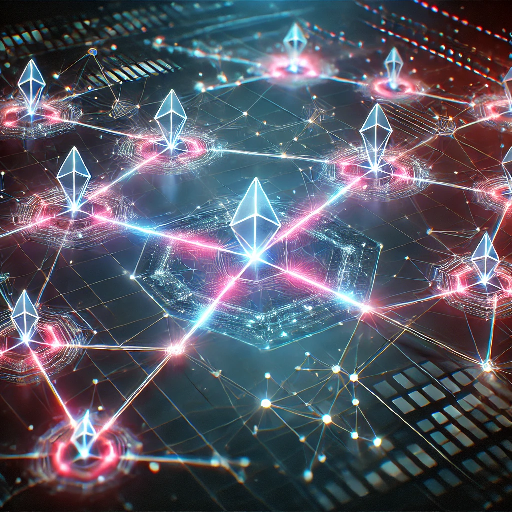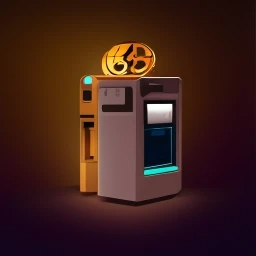Introduction: What is a Distributed Ledger?
Distributed ledger technology (DLT) has emerged as one of the most transformative innovations in the digital era. A distributed ledger refers to a decentralized database that exists across multiple locations or among multiple participants. Unlike traditional centralized databases, where a single entity has control, distributed ledgers operate on a peer-to-peer network, ensuring greater transparency, security, and resilience. In this article, we will delve into the intricacies of distributed ledgers, explore their latest advancements, and discuss how they are shaping industries worldwide.
The Evolution of Distributed Ledger Technology
From Blockchain to Distributed Ledger
The journey of distributed ledger technology began with the introduction of blockchain. Blockchain is a type of distributed ledger that records transactions in immutable blocks. However, the scope of distributed ledgers extends beyond blockchain. While blockchain relies on chaining blocks together, other distributed ledger systems, like directed acyclic graphs (DAGs), use different mechanisms to achieve consensus and maintain data integrity.
Key Innovations in Distributed Ledgers
The last decade has seen significant advancements in distributed ledger technology:
- Scalability Solutions: Earlier versions of distributed ledgers struggled with scalability. Innovations like sharding, off-chain solutions, and improved consensus algorithms have addressed this challenge.
- Energy Efficiency: Proof-of-work (PoW) systems are being replaced or complemented by energy-efficient consensus mechanisms like proof-of-stake (PoS) and delegated proof-of-stake (DPoS).
- Interoperability: Cross-chain communication protocols enable different distributed ledgers to interact seamlessly, opening doors for more complex applications.
How Distributed Ledger Technology Works
The Core Components of a Distributed Ledger
A distributed ledger comprises the following key components:
- Nodes: These are entities within the network responsible for storing and maintaining an up-to-date version of the ledger.
- Consensus Mechanism: This ensures that all participants agree on the data recorded in the ledger.
- Data Structure: Distributed ledgers use cryptographic methods to secure and structure data.
- Decentralization: No central authority has control over the ledger, ensuring enhanced transparency and security.
Consensus Mechanisms in Distributed Ledgers
Different distributed ledger systems employ various consensus mechanisms to validate transactions and maintain data integrity:
- Proof of Work (PoW): Used in Bitcoin, it requires solving complex mathematical puzzles.
- Proof of Stake (PoS): Participants „stake“ their assets to validate transactions.
- Byzantine Fault Tolerance (BFT): Designed to achieve consensus even when malicious actors are present within the network.
Applications of Distributed Ledger Technology
Financial Services
Distributed ledgers are transforming the financial industry by providing swift and highly secure transaction mechanisms. Cryptocurrencies like Bitcoin and Ethereum are prime examples of how DLT is reshaping global finance. Beyond cryptocurrencies, distributed ledgers facilitate:
- Cross-Border Payments: Reducing intermediaries and transaction times.
- Smart Contracts: Automating contractual agreements.
- Decentralized Finance (DeFi): Empowering users with direct access to financial services.
Supply Chain Management
Supply chain operations benefit immensely from distributed ledger technology. By providing an immutable record of transactions, distributed ledgers enhance:
- Traceability: Ensuring a detailed and transparent record of the origin and movement of goods throughout the supply chain.
- Transparency: Building trust among stakeholders.
- Efficiency: Streamlining processes by eliminating manual record-keeping.
Healthcare
In healthcare, distributed ledgers ensure secure and transparent handling of patient records, clinical trials, and drug supply chains. Key benefits include:
- Data Security: Ensuring sensitive information remains protected from unauthorized access or breaches.
- Interoperability: Facilitating data sharing among healthcare providers.
- Fraud Prevention: Reducing counterfeit drugs and insurance fraud.
Energy Sector
Distributed ledgers are driving innovations in the energy industry, especially in:
- Peer-to-Peer Energy Trading: Enabling users to buy and sell excess energy directly.
- Grid Management: Optimizing energy distribution and consumption.
- Renewable Energy Credits: Tracking and trading green energy certifications.
Identity Management
In today’s interconnected digital landscape, managing digital identities has become a critical priority. Distributed ledgers offer a secure and decentralized solution for:
- Self-Sovereign Identity: Providing individuals with complete ownership and autonomous management of their digital identities without dependence on third parties.
- Authentication: Enhancing security in online transactions.
- Data Sharing: Ensuring privacy and control over personal information.
Challenges in Distributed Ledger Technology
Scalability
While advancements have been made, achieving scalability in distributed ledgers remains a challenge. Large transaction volumes can place excessive strain on networks, resulting in slower processing times and higher operational expenses.
Regulatory Issues
Distributed ledger systems operate across borders, often clashing with varying legal frameworks. Governments and regulatory bodies are still working on establishing standards and guidelines.
Security Concerns
Although distributed ledgers are inherently secure, vulnerabilities can still arise from poorly designed applications or malicious attacks on the network.
Adoption Barriers
Despite its potential, distributed ledger technology faces hurdles in widespread adoption due to lack of awareness, high implementation costs, and resistance to change.
The Last Frontier: Future of Distributed Ledger Technology
Integration with Artificial Intelligence (AI)
The combination of AI and distributed ledger technology can unlock unprecedented opportunities. AI can analyze large datasets stored on distributed ledgers, providing insights for industries like healthcare, finance, and logistics.
Quantum-Resistant Cryptography
As quantum computing evolves, it poses a threat to traditional cryptographic methods used in distributed ledgers. Efforts are underway to create quantum-resistant cryptography, ensuring these systems remain secure against emerging computational threats.
Government and Enterprise Adoption
Governments and enterprises are beginning to recognize the potential of distributed ledgers. Use cases range from digital currencies to transparent governance systems.
Expanding Use Cases
Distributed ledger technology holds vast potential for groundbreaking applications in emerging fields such as:
- Internet of Things (IoT): Establishing secure connections between devices to enable seamless automation and data exchange.
- Carbon Credit Management: Tracking emissions and promoting sustainability.
- Decentralized Autonomous Organizations (DAOs): Enabling community-driven governance structures.
Conclusion: Embracing Distributed Ledger Technology
The last frontier of distributed ledger technology is not just about overcoming challenges but also about exploring its untapped potential. As industries continue to innovate, distributed ledgers are poised to play a pivotal role in shaping a decentralized and transparent future. From redefining finance to revolutionizing healthcare, the applications of distributed ledger technology are limited only by imagination. The journey of distributed ledgers is far from over, and the possibilities ahead are both exciting and transformative.

















